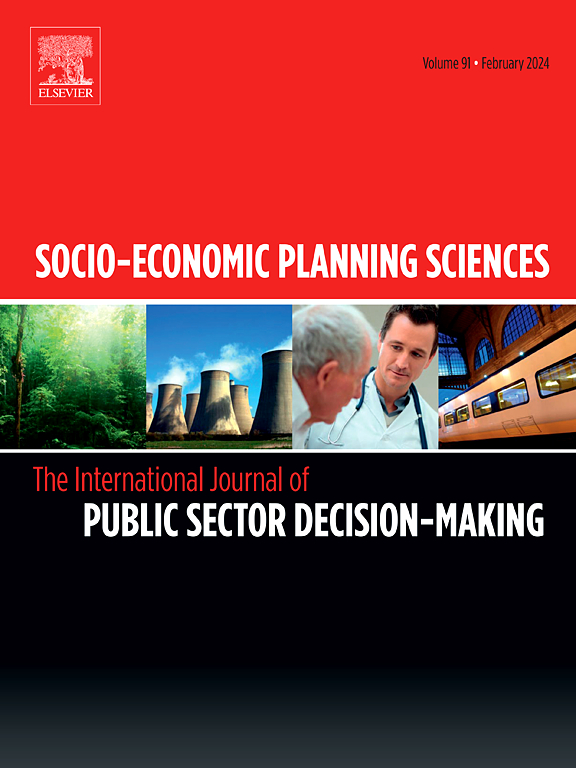中国农业碳减排与污染减排的协同效应探讨
IF 5.4
2区 经济学
Q1 ECONOMICS
引用次数: 0
摘要
鉴于农业环境问题的普遍性,以及气候变化和环境污染的紧迫挑战,寻求农业碳减排与污染减排的协同效应势在必行。本文基于非径向定向距离函数的构建和碳排放与污染的边际减排成本,提出了协同效应的系统测度。引入农业理想产出与非理想产出之间的弱可处置性假设,并严格建模。通过对中国大陆30个省份的实证分析,得出以下结论:(1)农业碳减排与污染减排的协同效应在大多数省份都存在,且呈明显的上升趋势;(2)东部地区边际碳减排成本最低,边际污染减排成本最高,协同效应最强;(3)进一步的路径选择分析表明,碳减排优先情景是最适用的策略。在实证研究的基础上,本研究还为中国农业监管机构提供了相应的政策建议。本文章由计算机程序翻译,如有差异,请以英文原文为准。
Exploring the agricultural synergy between carbon abatement and pollution reduction in China
Given the prevalence of environmental issues facing agriculture, along with the pressing challenges of climate change and environmental pollution, it is imperative to pursue the agricultural synergy between carbon abatement and pollution reduction. This paper proposes a systematic measure of the synergy effect based on the construction of non-radial directional distance functions and marginal abatement cost of carbon emissions and pollution. The weak disposability assumption between agricultural desirable and undesirable outputs are incorporated and modeled strictly. Furthermore, we conduct an empirical analysis on 30 provinces of mainland China and derive several findings: (1) The agricultural synergy between carbon abatement and pollution reduction exists in most provinces, and it shows an evident upward trend; (2) The eastern region exhibits the lowest marginal carbon abatement cost, the highest marginal pollution reduction cost, and the highest synergy effect; (3) Further path selection analysis indicate that the carbon abatement priority scenario is the most applicable strategy. Based on our empirical findings, this study also provides corresponding policy recommendations to Chinese agricultural regulators.
求助全文
通过发布文献求助,成功后即可免费获取论文全文。
去求助
来源期刊

Socio-economic Planning Sciences
OPERATIONS RESEARCH & MANAGEMENT SCIENCE-
CiteScore
9.40
自引率
13.10%
发文量
294
审稿时长
58 days
期刊介绍:
Studies directed toward the more effective utilization of existing resources, e.g. mathematical programming models of health care delivery systems with relevance to more effective program design; systems analysis of fire outbreaks and its relevance to the location of fire stations; statistical analysis of the efficiency of a developing country economy or industry.
Studies relating to the interaction of various segments of society and technology, e.g. the effects of government health policies on the utilization and design of hospital facilities; the relationship between housing density and the demands on public transportation or other service facilities: patterns and implications of urban development and air or water pollution.
Studies devoted to the anticipations of and response to future needs for social, health and other human services, e.g. the relationship between industrial growth and the development of educational resources in affected areas; investigation of future demands for material and child health resources in a developing country; design of effective recycling in an urban setting.
 求助内容:
求助内容: 应助结果提醒方式:
应助结果提醒方式:


